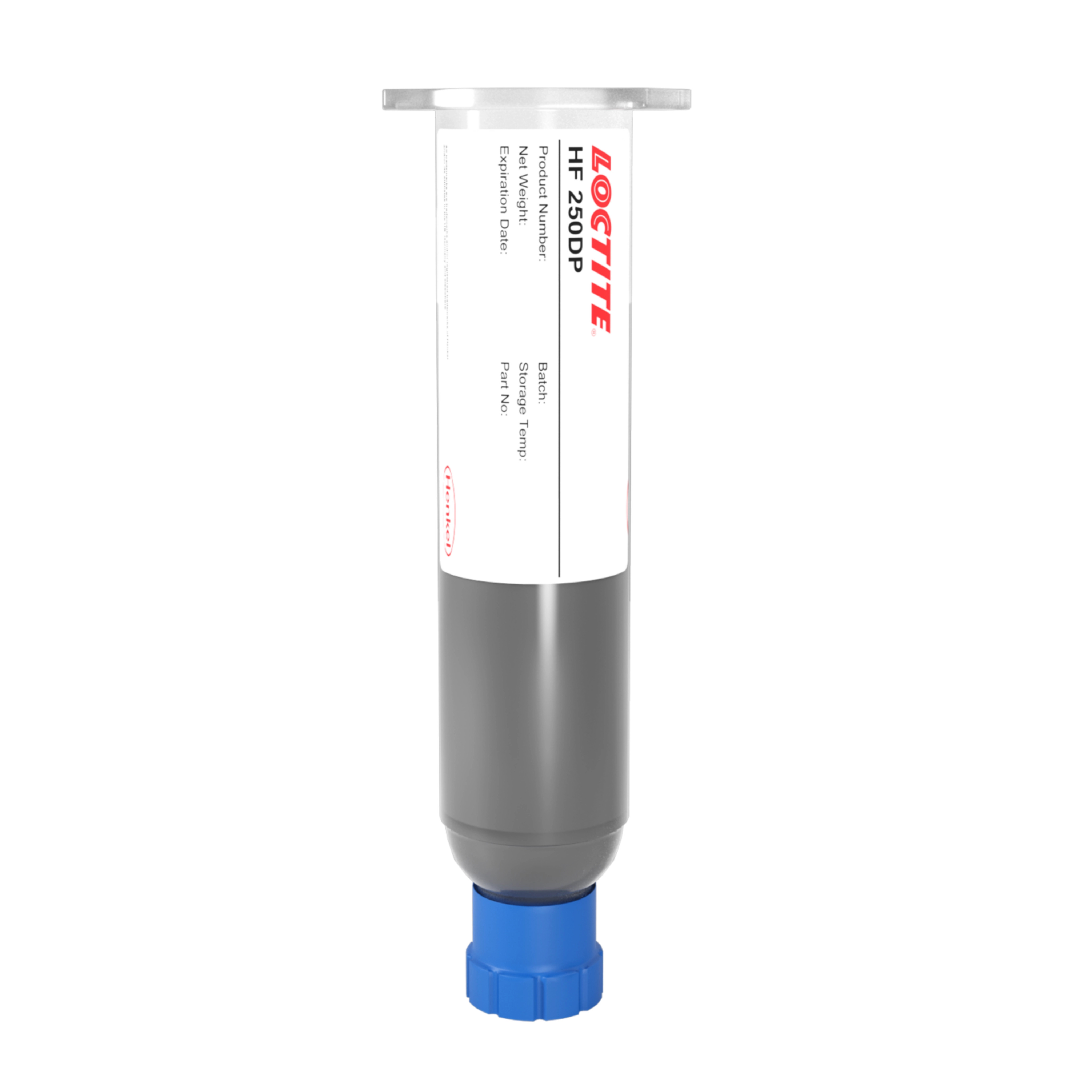LOCTITE HF 250DP
Harmonization Code : 8001.20 | Unwrought tin: Tin alloys
Main features
- 95.5%Sn: 3.8%Ag:0.7%Cu - 96SC Alloy
- Lead free Soldering
- Suitable for reflow in nitrogen
Product Description
LOCTITE HF 250DP solder paste is a halogen-free, no clean, low voiding Pb-free solder paste. It is a low metal content solder paste formulated for dispense applications.
LOCTITE HF 250DP has been optimized to achieve consistent 250 to 300um dots using a 27 gauge needle. It contains a stable resin system and slow evaporating solvents and is suitable for nitrogen reflow.
LOCTITE HF 250DP solder paste is no-clean and is designed to be left on the PCB in many applications post assembly since it does not pose a hazard to long-term reliability. Should there be a specific requirement for residue removal, this may be achieved by using conventional cleaning processes based on solvents such as MULTICORE MCF800
Technical Specifications
| General Properties | |
| Alloy Type Alloy Type A metallic element type | 96SC (SAC387) |
| Physical Properties | |
| Thixotropic index Thixotropic index Thixotropic Index is a ratio of a material s viscosity at two different speeds in Ambient temperature, generally different by a factor of ten. A thixotropic material s viscosity will decrease as agitation or pressure is increased. It indicates the capability of a material to hold its shape. Mayonnaise is a great example of this. It holds its shape very well, but when a shear stress is applied, the material easily spreads. It helps in choosing a material in accordance to the application, dispense method and viscosity of a material. | 0.6 |
| Viscosity Viscosity Viscosity is a measurement of a fluid’s resistance to flow. Viscosity is commonly measured in centiPoise (cP). One cP is defined as the viscosity of water and all other viscosities are derived from this base. MPa is another common unit with a 1:1 conversion to cP. A product like honey would have a much higher viscosity -around 10,000 cPs- compared to water. As a result, honey would flow much slower out of a tipped glass than water would. The viscosity of a material can be decreased with an increase in temperature in order to better suit an application | 160,000 mPa.s |



